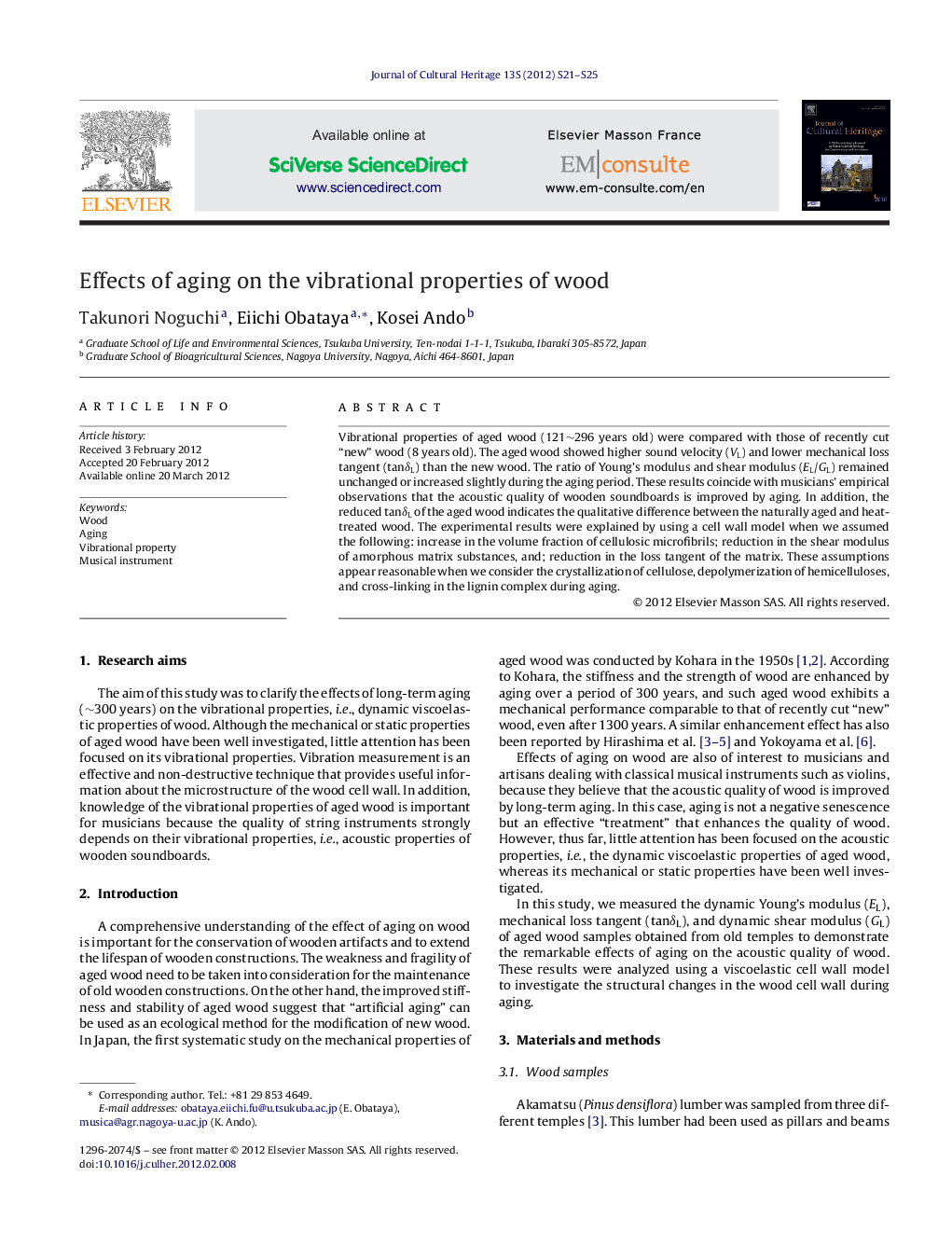| Article ID | Journal | Published Year | Pages | File Type |
|---|---|---|---|---|
| 1038232 | Journal of Cultural Heritage | 2012 | 5 Pages |
Vibrational properties of aged wood (121∼296 years old) were compared with those of recently cut “new” wood (8 years old). The aged wood showed higher sound velocity (VL) and lower mechanical loss tangent (tanδL) than the new wood. The ratio of Young's modulus and shear modulus (EL/GL) remained unchanged or increased slightly during the aging period. These results coincide with musicians’ empirical observations that the acoustic quality of wooden soundboards is improved by aging. In addition, the reduced tanδL of the aged wood indicates the qualitative difference between the naturally aged and heat-treated wood. The experimental results were explained by using a cell wall model when we assumed the following: increase in the volume fraction of cellulosic microfibrils; reduction in the shear modulus of amorphous matrix substances, and; reduction in the loss tangent of the matrix. These assumptions appear reasonable when we consider the crystallization of cellulose, depolymerization of hemicelluloses, and cross-linking in the lignin complex during aging.
